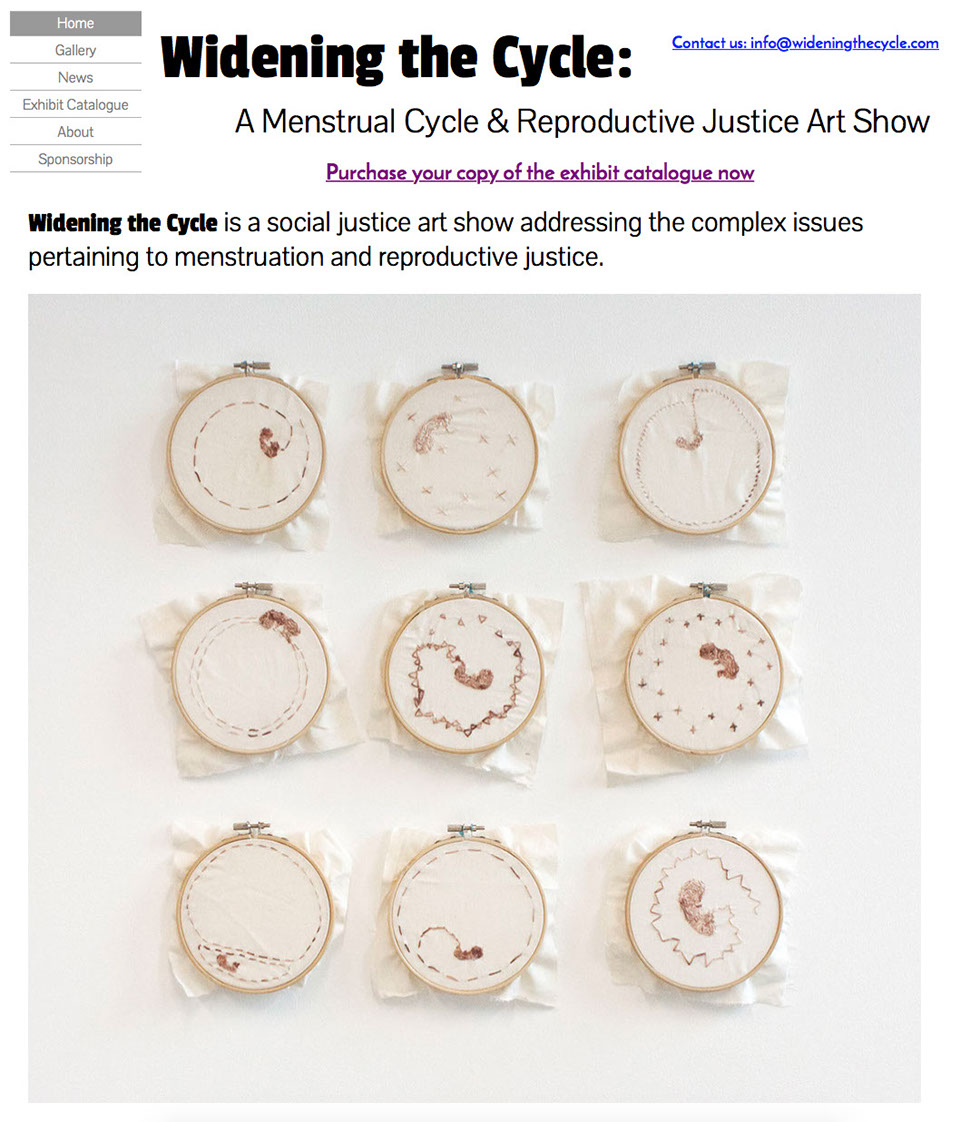Artist Bio
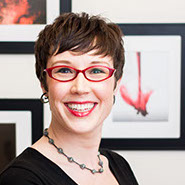
Jen
In a strange twist of events, my entire life changed in 2012 when I started using a menstrual cup. It sounds odd, but that one little purchase paved the way for me to switch my entire life’s focus. Within one year’s time, I would transition from mundane office work to bold artistic expressions. During this time I developed my personal artivist voice by weaving my interest in contemporary art and women’s rights together. Intentional or not, my first conceptual art project had a fresh feminist statement that I enthusiastically embraced and could not resist following. I was pleased to witness Beauty in Blood receive an incredibly warm reception during it’s debut year by both the academic and artistic communities. It was a dream come true to participate in 8 group exhibitions in 2013. Last fall presented us with the opportunity to relocate to Denver, Colorado and we took it! I’ve fallen in love with the city of Denver and what little of Colorado I’ve seen in this short time we’ve been here. Prior to my aforementioned twist of fate with the menstrual cup, I received my Bachelors of Art in the History of Art at the University of Michigan in 2001 and spent the time between then and now working various administrative jobs around my alma mater, including the Director’s Office at The Institute for Social Research and the Markovitz Research Laboratory in the Medical School. While I didn’t realize it at the time, these cross-disciplinary experiences were building the foundation for my work as an artivist. When I’m not making new menstrual designs or exploring my new city, I enjoy spending time with my husband and our 4 furry children. I have a bit of a “joining” problem and can usually be found volunteering for any number of organizations ranging from the art museum to the roller derby.
Jen's CV
Rob
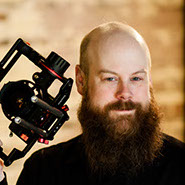
It is through my love of skateboarding I have explored many avenues of expression and documentation. Skater, illustrator, videographer, photographer, designer. I have always gravitated toward the visuals arts. It is through the love of Jen and her ability to search, question, and examine life and give voice to her experience as a woman, that I come to Beauty in Blood with an open mind and excitement to see what she will teach me. I provide a set of technical skills that provide documentation and delivery of Jen's ideas and creations.
The Process
There is more to my art than simply bleeding into the toilet each month. Each image is substantially more than a crass or vulgar image thrown up on a wall for mass shock appeal. Creating each piece of work is a four-step process bookended by concept and intellect: media collection, pouring/design layout, photographic capture, and finally photograph selection. Interestingly, this conceptual feminist art project is not an independent women’s only project. While the subject matter and overall thrust of the project are feminist at their core, Beauty in Blood is a collective project executed by myself and my male partner, Rob Lewis. Feminism is as much about men who promote women’s rights as it is about the women who fight for the movement, so enlisting a male artist to move this project forward was a completely natural step. From start to finish, each creation ties together guiding principles from conceptual art, photography, and feminism in the contemporary United States.

Collection: As one might assume, the life cycle of one of my pieces begins with the first day of my menstrual cycle and my trusty menstrual cup. Once the cup is sealed in place, it collects fluid for roughly 10-12 hours at a time for about 3-4 days each month.
Pouring/design layout: When the time comes, Rob fires up the studio lights in our bathroom, gets into position with the camera, and I begin to dump, drizzle, and drip the bloody matter into a clean toilet bowl and other clear vessel. Some pours mimic a 'real life' dump, i.e. quick and unintentional, into the bowl while others are more carefully executed with particular attention paid to the height and pouring technique with specific intention to render 'beautiful' or 'interesting' designs. Composition is crucial to the final image and it is comprised of equal parts pouring and chance movement of the material in the water.
Photographic capture: Shooting sessions can last any where between 60 seconds and 30 minutes depending on the volume of menstrual fluid collected as well as the consistency. Samples that have more clots and tissue tend to move very slowly through the water with lots of twisting and turning as the matter dissolves and breaks free on its journey to the bottom of the bowl. Rob shoots with a Canon 5D Mk ll and uses a macro lens. As a side, collection dates, frequency, and observations are recorded for each cycle.
Photograph selection: After each cycle, Rob and I sit down at our computer to scroll through the hundreds of images we have captured, then the images are carefully selected based on their compositional merit. Some images are selected for their abstract designs while others are chosen for their unintentional representational images. The macro lens allows us to capture amazingly detailed photographs, almost like looking it under a microscope, and we cannot anticipate this detail based on what we see with our naked eye. We usually scroll through the images a couple times, once with intense focus on the details and another with looser, more relaxed gaze. Collectively we choose the images that are most interesting and appealing for display.
Artist Statement
Menstruation, Body Politics, & Art
If I have learned anything over the last two years of producing Beauty in Blood, it is that menstruation matters more than most people in society are willing to recognize; it is deeply embedded in our global body politics and is a major contributor to the vast gender inequity between men and women today. Institutionalized hierarchies maintain and support the outdated patriarchal belief that menstruation makes the female body inferior to the male body. Billions of dollars are spent annually trying to make women’s bodies conform to male “norms” by suppressing the natural menstrual cycle through hormonal birth control. The feminine “hygiene” industry perpetuates taboo thinking by suggesting the monthly cycle is dirty and socially impolite; it should be concealed in frilly pink wrappers like candy and only very loosely referenced with blue liquid in product commercials. In my experience, women and men are hungry for an authentic dialogue about menstruation and all that encompasses. It is clear the time is now to stand up and speak out on behalf of menstruation. It is a natural, messy but beautiful part of life. Just because it is not a shared experience doesn’t mean it needs to be a divisive topic that aids in gender inequity. Beauty in Blood asserts that menstruation needs to be seen to help normalize the female body and to acknowledge this part of the female experience by inviting the viewer to take a closer look and reflect on their personal gut reactions to the subject of “menstruation.”
Beyond the biohazard: an aesthetic examination of menstrual blood
Frankly, I do not think there is any place in modern society for taboo subjects, especially in as far as women are concerned. Pacifying social taboos only serves to give more power to society than to the self, and as women we have done that for far too long. The time is now to shut down the long-held shame and squeamishness surrounding menstruation. My work quashes this taboo, reclaims feminine power, and puts this subject on the pedestal it so rightly deserves. The images I capture force the viewer to think about menstruation in an entirely new way. Capturing the artful quality of this natural occurrence is my way of progressing society's view and conversation around menstruation as well as redefining some traditional fine arts aesthetic notions.
Using blood as a medium to create art first occurred to me when I switched up the femcare products in my medicine cabinet.
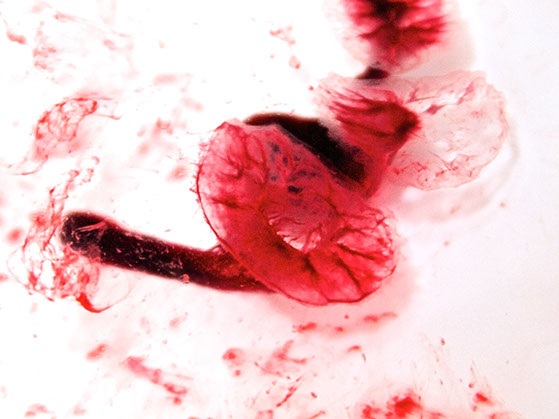 The reusable option is essentially a little cup that collects the rich, viscous red substance for deposit rather than absorbing it with cotton. It allows the user to either dump the matter immediately or use it for another purpose later, like nourishing vegetation, for instance, or creating an artist’s canvas wash. After just a few uses, it was evident to me that this blood closely mimicked the properties of paint. I quickly became entranced by the designs the poured blood made in the toilet: the stark contrast of bright crimson against the porcelain white bowl; the various plunging speeds at which the clots, fluid, and tissue travelled to the bottom; and the patterns made by the liquid upon its first impact with the water and the subsequent patterns made as it dispersed through the water. There was a captivating, unexpected yet undeniable attractiveness there in the bowl before me that I had never previously observed. The socially conditioned 'ew' response was instantly and wholly drowned out by the vibrant design. Other people, especially women, need to see this…need to bear witness to the beauty their bodies create monthly – separate from the “beauty of giving life” that is hammered into us by society from puberty into adulthood; for what other benefit could possibly come of this “gross” “curse” but re-populating the world? My work captures those moments on film and presents them within the traditional context of fine art.
The reusable option is essentially a little cup that collects the rich, viscous red substance for deposit rather than absorbing it with cotton. It allows the user to either dump the matter immediately or use it for another purpose later, like nourishing vegetation, for instance, or creating an artist’s canvas wash. After just a few uses, it was evident to me that this blood closely mimicked the properties of paint. I quickly became entranced by the designs the poured blood made in the toilet: the stark contrast of bright crimson against the porcelain white bowl; the various plunging speeds at which the clots, fluid, and tissue travelled to the bottom; and the patterns made by the liquid upon its first impact with the water and the subsequent patterns made as it dispersed through the water. There was a captivating, unexpected yet undeniable attractiveness there in the bowl before me that I had never previously observed. The socially conditioned 'ew' response was instantly and wholly drowned out by the vibrant design. Other people, especially women, need to see this…need to bear witness to the beauty their bodies create monthly – separate from the “beauty of giving life” that is hammered into us by society from puberty into adulthood; for what other benefit could possibly come of this “gross” “curse” but re-populating the world? My work captures those moments on film and presents them within the traditional context of fine art.There is more to my art than simply bleeding into the toilet each month. Each image is substantially more than a crass or vulgar image thrown up on a wall for mass shock appeal. Creating each piece of work is a four-step process bookended by concept and intellect: media collection, pouring/design layout, photographic capture, and finally photograph selection. Interestingly, this
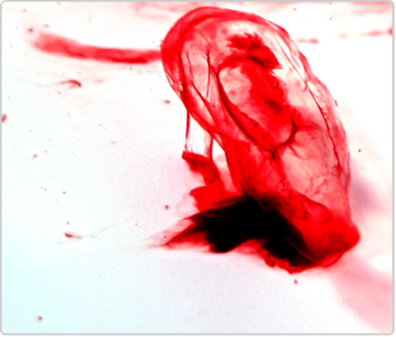 conceptual feminist art project is not an independent woman’s only project. While the subject matter and overall thrust of the project are feminist at their core, Beauty in Blood is a collective project executed by myself and my male partner, Rob Lewis. Feminism is as much about men who promote women’s rights as it is about the women who fight for the movement so enlisting a male artist to move this project forward was a completely natural step. From start to finish, each creation ties together guiding principles from conceptual art, photography, and feminism in the contemporary United States.
conceptual feminist art project is not an independent woman’s only project. While the subject matter and overall thrust of the project are feminist at their core, Beauty in Blood is a collective project executed by myself and my male partner, Rob Lewis. Feminism is as much about men who promote women’s rights as it is about the women who fight for the movement so enlisting a male artist to move this project forward was a completely natural step. From start to finish, each creation ties together guiding principles from conceptual art, photography, and feminism in the contemporary United States.The concept of menstrual blood as an artistic medium was almost instantaneous after I began observing the colors and movement of my period in the toilet. Its texture and color are quite reminiscent of paint - varying thickness, texture, and color. I noticed right away that I could drip, splatter, and move the blood around its canvas - the toilet bowl, either on the porcelain itself or in the water - similarly to paint on traditional canvas. Obviously, it is not a refined enough material to do figural or representational work (yet), but it certainly works to create fascinating abstract images. The color, forms, and lines of the mobile material make for unusually interesting compositions that are never exactly repeatable because of unpredictable nature of the menstrual fluid. I really enjoy working with my blood because it is readily available, all-natural, unpredictable, and quite fun.
.jpg)
Ultimately though, the Beauty in Blood project challenges the long-standing cultural taboo of women's menstrual cycles by offering the viewer another perspective of period blood. There is an abstract artistic quality when blood meets water that warrants a closer look not only by women but also by society as a whole. We live in a world where we are completely desensitized to blood shed in violence but are squeamish at the mere mention or suggestion of women’s menstruation, something every woman has for about 35-40 years of her life. I challenge the notion that menstruation is “gross”, “vulgar”, or “unrefined”; I counter these notions with candid, real-life photos of my menstrual blood, and others in future projects.
Other Projects
